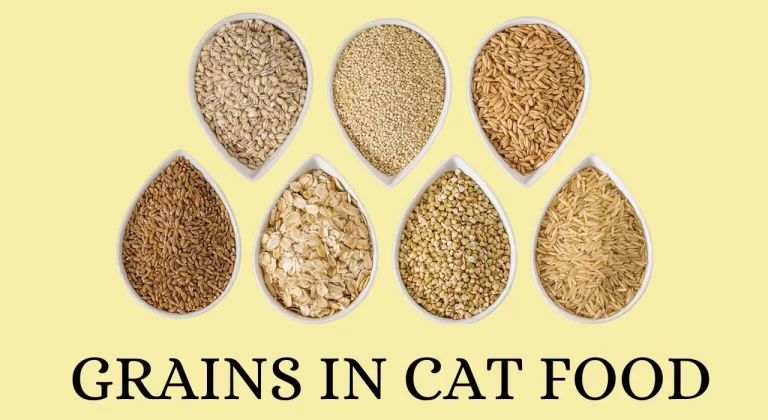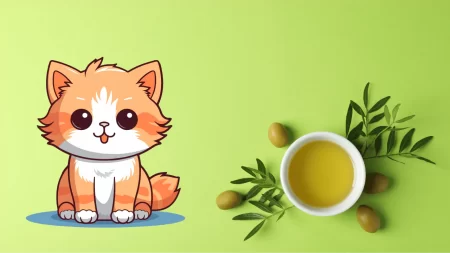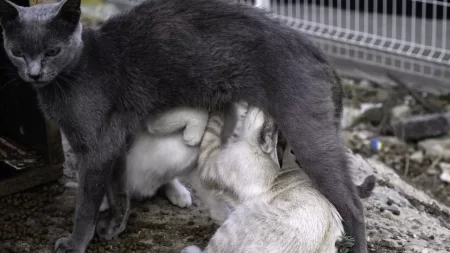Grains are not necessary for your cat’s diet, but they are not harmful either. They offer essential nutrients, energy, aid in digestion, help maintain weight, and support overall feline health.
Nevertheless, cats can obtain carbohydrates from sources other than grains, and some cats may thrive without them.
Factors like dietary needs, preferences, veterinarian advice, ingredient quality, and safety, as well as product cost and availability, influence the best cat food choice.
To make an informed decision for your cat’s diet, conduct research, examine labels, and consult with your veterinarian.
This article aims to clarify the role of grains in cat food, debunk misconceptions, and guide you toward a well-informed choice.
The Role of Grains in Cat Food
Grains are a source of carbohydrates, which provide essential nutrients and energy for your cat. They also aid in digestion, help maintain a healthy weight, and support overall feline health. Here are some of the benefits of grains in cat food:
- Provide essential nutrients and energy. Cells utilize glucose, derived from the breakdown of carbohydrates, for diverse cellular functions. Some grains also contain vitamins, minerals, antioxidants, and fiber that are beneficial for your cat’s health.
- Aid in digestion. Fiber from grains can help regulate your cat’s bowel movements, prevent constipation, and promote healthy gut flora. Fiber can also help reduce hairballs by moving the hair through the digestive tract.
- Help maintain a healthy weight. Grains can help your cat feel full and satisfied, which can prevent overeating and obesity. Obesity increases the likelihood of developing health issues like diabetes, arthritis, and heart disease.
- Support overall feline health. Grains can help support your cat’s immune system, skin and coat health, and urinary tract health. Certain grains possess anti-inflammatory properties capable of alleviating inflammation and pain.
Debunking Common Misconceptions
Despite the benefits of grains in cat food, some pet parents may have doubts or concerns about them. Here are some of the common misconceptions about grains in cat food and the truth behind them:
- Understanding cat allergies: Distinguishing truth from myth. Individuals might presume their feline suffers a grain allergy, though such a case is incredibly uncommon. Surprisingly, corn ranks amongst the least probable food allergy sources for cats. Beef, dairy, and fish tend to be the predominant food allergens for these creatures. Noticeable signs of a food allergy in your cat – itchiness, rampant grooming, hair loss, or skin disorders – should prompt immediate consultation with a vet for precise diagnosis and treatment.
- Scientifically backed facts on grain inclusion: Some hold the belief that grains harm cats or are unnatural for their consumption. However, science doesn’t uphold these assumptions. As obligate carnivores, cats require animal protein to live, but they also have the capability to digest and utilize carbohydrates from plant-based sources. Grains serve to supplement their diet with additional nutrients and benefits that animal protein alone can’t provide.
- Grain-free cat food merits: Is it essential? Choosing grain-free cat food may appear as a healthier or more fitting option for their pets to some owners. However, the absence of grains doesn’t automatically denote a superior or more suitable diet for your feline. Grain-free food typically incorporates other carbohydrate sources like potatoes, peas, or lentils, which may not necessarily offer more benefits than grains. Additionally, grain-free food tends to pack more calories, fat, or protein compared to grain-inclusive variants, which might not be ideal for certain felines with specific health conditions.
Making an Informed Decision
To make an informed decision about cat food, consider factors like your cat’s needs, your vet’s advice, ingredient quality, and cost. Follow these tips:
- Address your cat’s dietary needs and preferences. Every cat is unique, so choose food that suits their age, activity level, health, and tastes. For instance, kittens require more protein and calories, while senior cats may need fewer calories and more fiber. Indoor cats might benefit from less fat and more antioxidants. Some cats prefer wet or dry food.
- Seek personalized advice from your vet. They know your cat’s health and can suggest suitable brands or formulas. They can also monitor your cat’s progress and response to dietary changes.
- Read labels and understand ingredients. Ensure the cat food is safe, high-quality, and appropriate for your cat. Look for named animal proteins as the primary ingredients (e.g., chicken, turkey, salmon). Avoid by-products, artificial additives, and check the guaranteed analysis for protein, fat, fiber, and moisture percentages.
- Consider grain-free alternatives carefully. If you prefer grain-free food, ensure it’s balanced and suitable for your cat. Compare the pros and cons of grain-free and grain-inclusive options. Discuss any diet changes, including raw, homemade, or freeze-dried food, with your vet before proceeding.







